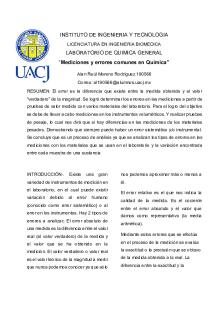Lecture 2 - Given by Alan Hegarty PDF

| Title | Lecture 2 - Given by Alan Hegarty |
|---|---|
| Course | Science Mathematics 2 |
| Institution | University of Limerick |
| Pages | 2 |
| File Size | 42.2 KB |
| File Type | |
| Total Downloads | 39 |
| Total Views | 136 |
Summary
Given by Alan Hegarty...
Description
MA4602 – integration Alan Hegarty More standard integrals To integrate a constant that is raised to the power of a variable (ax) (note that a must be a positive number in this,) we take the original function (ax) and divide it by the natural log of the constant, adding C. (Int(ax) = ax / ln(a) + c.) e.g – int(7x) = 7x / ln(7) + c Inverse trig functions Inverse trig functions are essentially the opposite of trig functions. Sin(x) = y where y is the value when we insert an angle into x. An inverse trig function is used to determine what the angle was, making use of the trig sign and the end result. In layman’s terms, if Sin of an angle was 1, we use sin-1(1) to determine what the angle is. Sin-1 (sin (x)) = x. The inverse is true also. Tan (sin-1(x)) = x/ (1 – x2)0.5 Cos-1(Cos(x)) = x. The inverse is true also. Sin-1(x) + Cos-1(x) = pi/2 or 90o. Sin(Cos-1(x)) = (1-x2)0.5
Derivative of trig functions der(Sin-1(x)) = 1/(1-x2)0.5 der(Sin-1(x/a)) = 1/(a2-x2)0.5 der(Cos-1(x/a)) = -1/(a2-x2)0.5 der(Tan-1(x/a)) = a/(x2+a2)
Note that integrating what is found on the right hand side of the equals sign will give back what is on the left – meaning if you integrate 1/(1-x2)0.5 you will get Sin-1(x.)...
Similar Free PDFs

Lecture Notes Alan Manning
- 151 Pages

Watchmen by Alan Moore Summary
- 2 Pages

Chapter 3,4 given by kinesiolgy
- 2 Pages

Hegarty Revision list - Higher
- 3 Pages

Given Circumstances 2
- 2 Pages

Equations Given
- 1 Pages

2. MODE ONE (Alan Roger Currie)
- 165 Pages

Practica 3 Alan Moreno
- 5 Pages
Popular Institutions
- Tinajero National High School - Annex
- Politeknik Caltex Riau
- Yokohama City University
- SGT University
- University of Al-Qadisiyah
- Divine Word College of Vigan
- Techniek College Rotterdam
- Universidade de Santiago
- Universiti Teknologi MARA Cawangan Johor Kampus Pasir Gudang
- Poltekkes Kemenkes Yogyakarta
- Baguio City National High School
- Colegio san marcos
- preparatoria uno
- Centro de Bachillerato Tecnológico Industrial y de Servicios No. 107
- Dalian Maritime University
- Quang Trung Secondary School
- Colegio Tecnológico en Informática
- Corporación Regional de Educación Superior
- Grupo CEDVA
- Dar Al Uloom University
- Centro de Estudios Preuniversitarios de la Universidad Nacional de Ingeniería
- 上智大学
- Aakash International School, Nuna Majara
- San Felipe Neri Catholic School
- Kang Chiao International School - New Taipei City
- Misamis Occidental National High School
- Institución Educativa Escuela Normal Juan Ladrilleros
- Kolehiyo ng Pantukan
- Batanes State College
- Instituto Continental
- Sekolah Menengah Kejuruan Kesehatan Kaltara (Tarakan)
- Colegio de La Inmaculada Concepcion - Cebu







